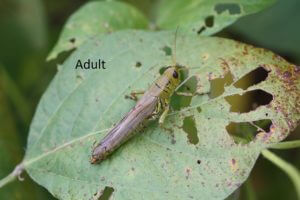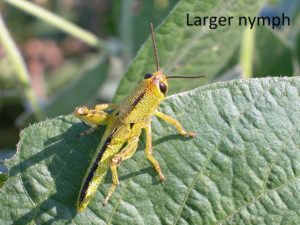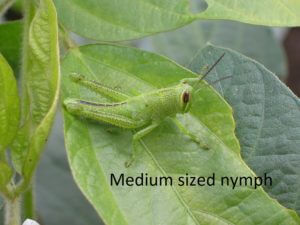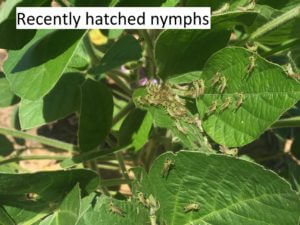Management options
| Insecticide (Trade Names) for GRASSHOPPERS | Lb Active Ingredient per Acre | Amount Formulation per Acre | Performance Rating |
|---|---|---|---|
| acephate 90 (Orthene 90S) | 0.30 - 0.50 | 0.33 - 0.56 lb | 8 |
| bifenthrin (Brigade 2E, Discipline 2E, Fanfare 2E) | 0.063 - 0.10 | 4 - 6.4 oz | 7 |
| diflubenzuron (Dimilin 2L), for immatures only | 0.031 | 2 oz | 8 |
| esfenvalerate (Asana XL 0.66E) | 0.03 - 0.05 | 5.8 - 9.6 oz | 7 |
| novaluron (Diamond 0.83E) | 0.039 - 0.052 | 6 - 9 oz | 8 |
| β-cyfluthrin (Baythroid XL 1) | 0.0155 - 0.022 | 2.1 - 2.8 oz | 7 |
| γ-cyhalothrin (Declare 1.25) | 0.0125 - 0.015 | 1.28 - 1.54 oz | 7 |
| λ-cyhalothrin (Warrior II 2.08) | 0.025 - 0.030 | 1.6 - 1.9 oz | 7 |
| Z-cypermethrin (Mustang Maxx 0.8E) | 0.020 - 0.025 | 3.2 - 4 oz | 7 |
- Grasshoppers are primarily a problem in reduced-tilled fields because tillage can destroy egg masses.
- A beneficial cultural practice is to mow ditch banks and field edges before crop emergence to minimize the optimal habitat for grasshoppers before they relocate into cropping fields.
- For more information see https://utcrops.com/soybean/soybean-insects/soybean-insects-publications/.



